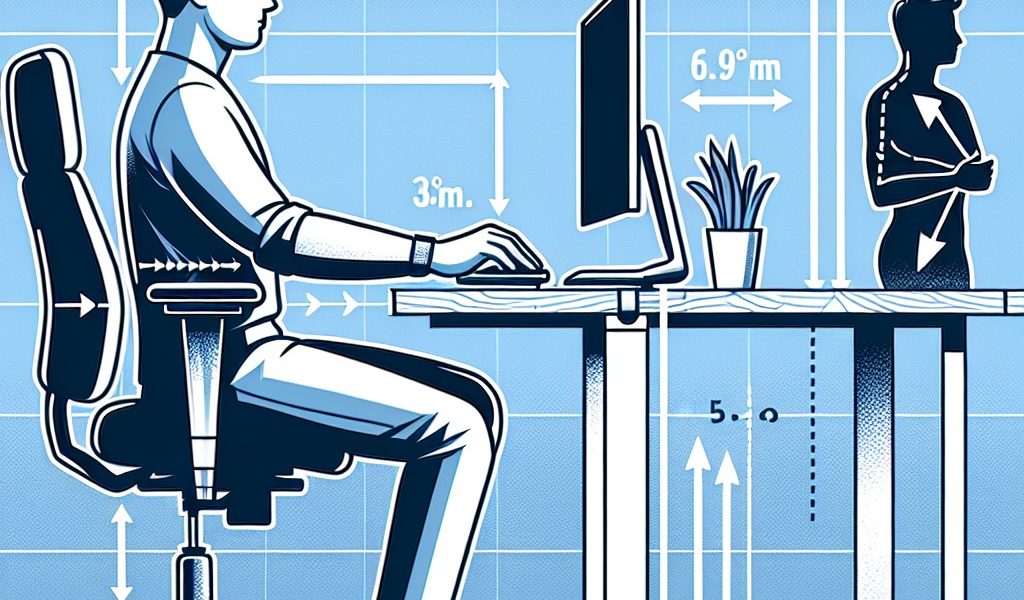Introduction
Choosing the height of a desk is crucial to ensuring an ergonomic and comfortable posture at work. An unsuitable height can lead to joint and muscle pain, as well as general fatigue. In this article, we will give you the recommended height ranges based on people’s heights, as well as tips for adjusting desk height according to individual needs. We will also discuss some key rules for good ergonomics at the workstation.
The importance of a suitable height
The standard height of a desk should be chosen carefully to avoid problems related to poor posture, such as:
- Neck and back pain
- Muscle tension in the back, shoulders and neck
- Headache
- Visual fatigue
- Carpal tunnel syndrome or other musculoskeletal disorders (MSD)
To prevent these inconveniences, it is essential to adapt the height of the desk to the morphological characteristics of each user. The seated position should allow natural alignment between the screen, eyes and keyboard.
Recommended height intervals depending on the height of the person
The ideal height of a desk depends mainly on the height of the user. Here are some recommended height intervals based on different size ranges:
| Size |
Desk height (in cm) |
| Less than 1.60 m |
65 to 72 |
| Between 1.60 and 1.75 m |
68 to 76 |
<
| Between 1.75 and .90 m |
74 to/–
These values are given for information purposes only and may vary depending on individual preferences or professional constraints.
Adjust desk height according to individual needs
To find the ideal height for your desk, here are some tips:
- Do the elbow test: Sit at your workstation and bend your elbows at an angle of approx. The desk surface should be slightly above elbow level. If not, adjust the height accordingly.
- Use suitable accessories: If your desk is not adjustable, you can use risers or wedges to adjust its height. There are also supports for keyboards and mice which allow you to adapt their positioning according to your needs.
Key rules for good ergonomics at the workstation
In addition to the height of the desk, here are some rules to follow to ensure an ergonomic posture:
- Position the screen about an arm’s length away (50 to 70 cm) and slightly below eye level.
- Adjust the height and tilt of the seat so that your feet rest naturally on the floor or on a footrest.
- Maintain a right angle between your back and thighs, as well as between your thighs and calves. Optionally use a lumbar cushion to support your lower back.
- Keep your forearms parallel to the floor when typing or using the mouse.
- Take regular breaks and vary your positions throughout the day (walking, stretching).Conclusion
The ideal height of a desk is essential to ensure an ergonomic and comfortable posture at work. By following the advice and recommendations in this article, you will be able to adapt the height of the workstation according to individual needs and thus prevent joint and muscle pain linked to poor posture. Do not hesitate to consult a professional if you encounter difficulties or need personalized support in the layout of your work spaces.
The Isospace experts

